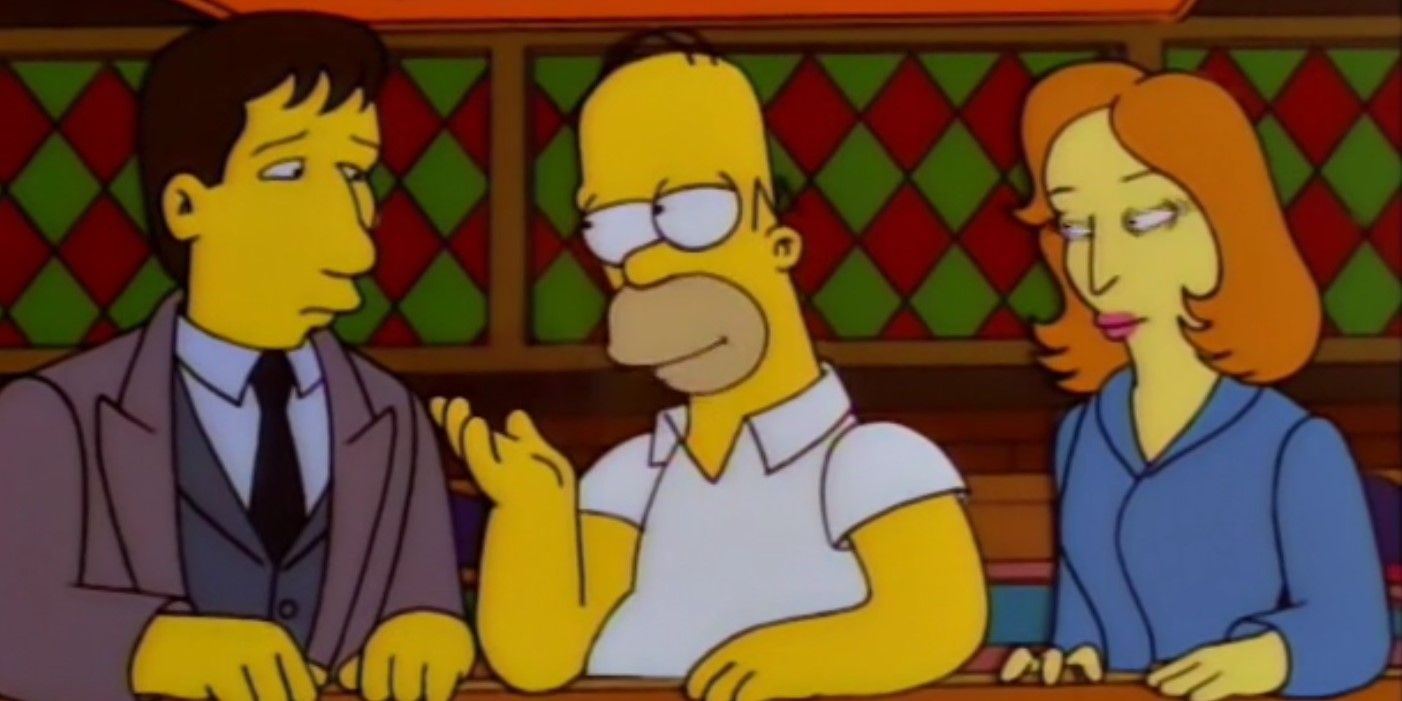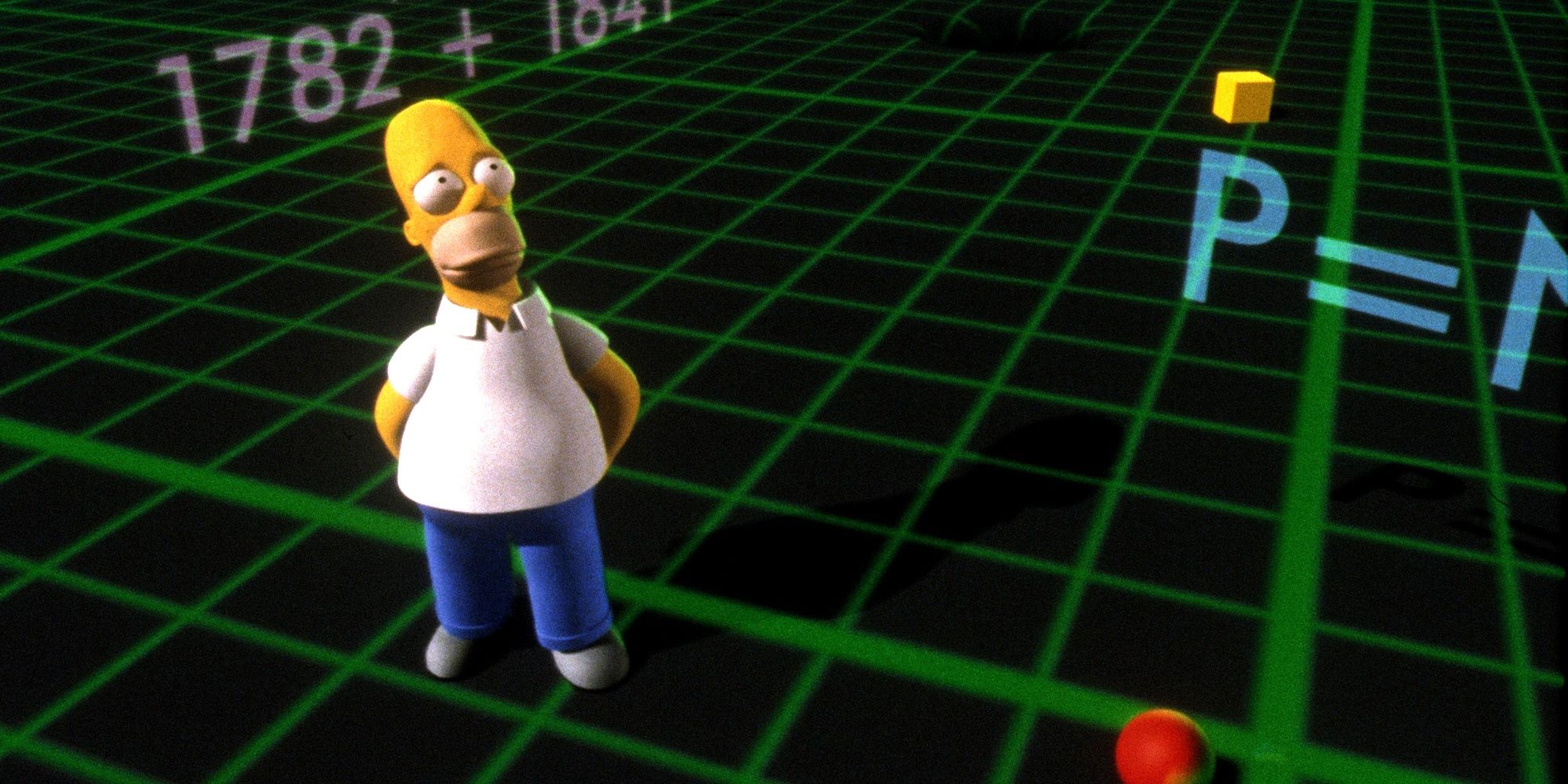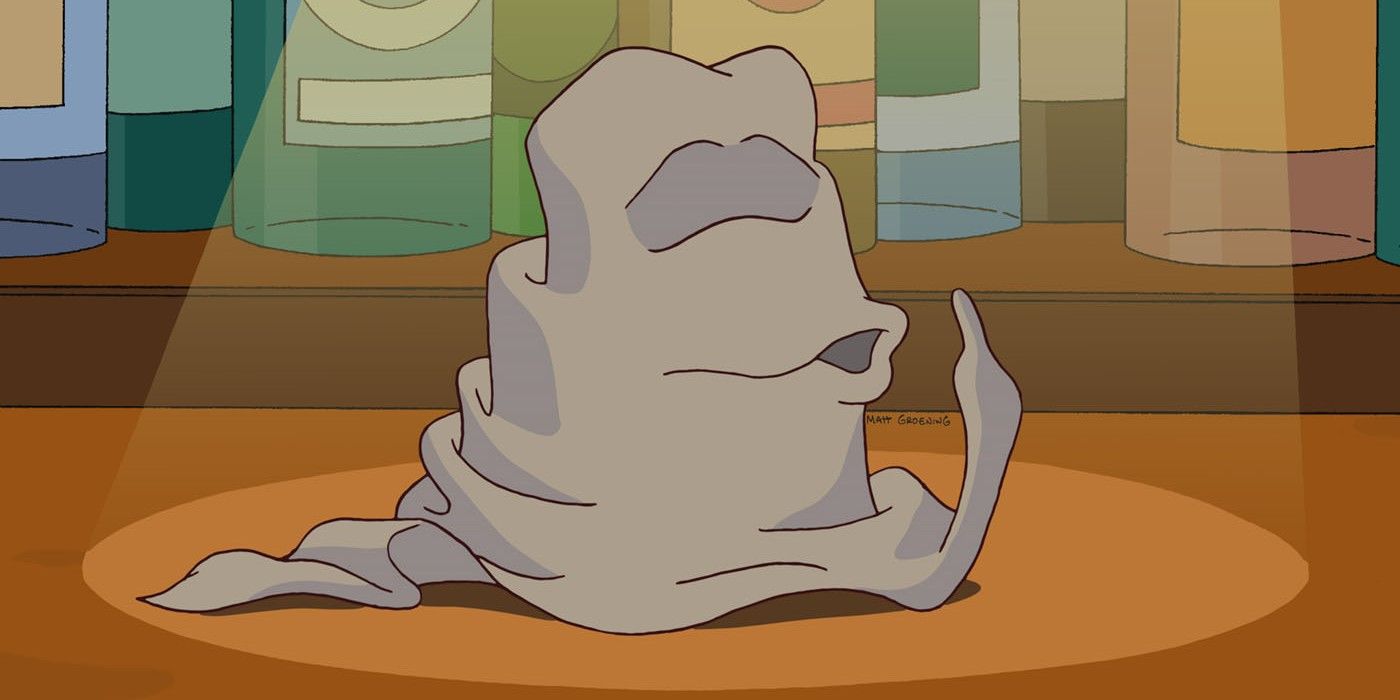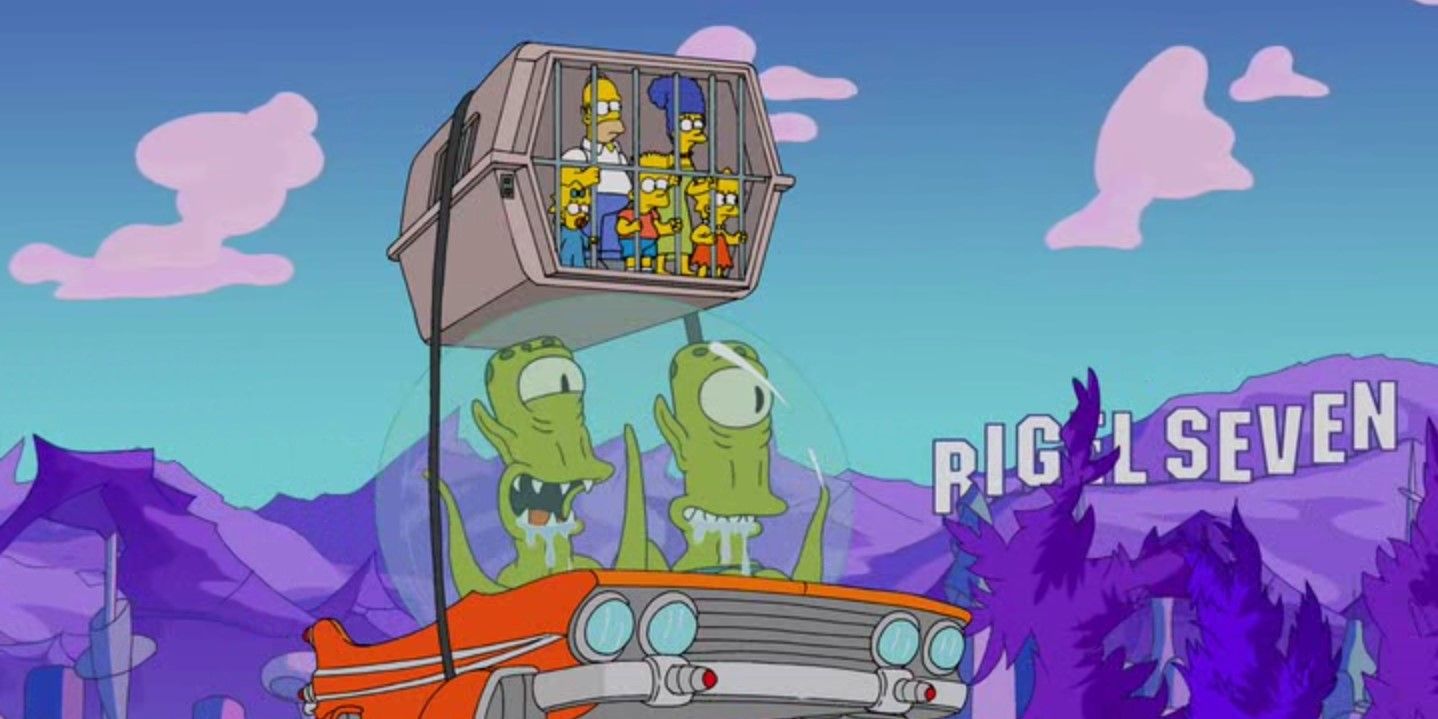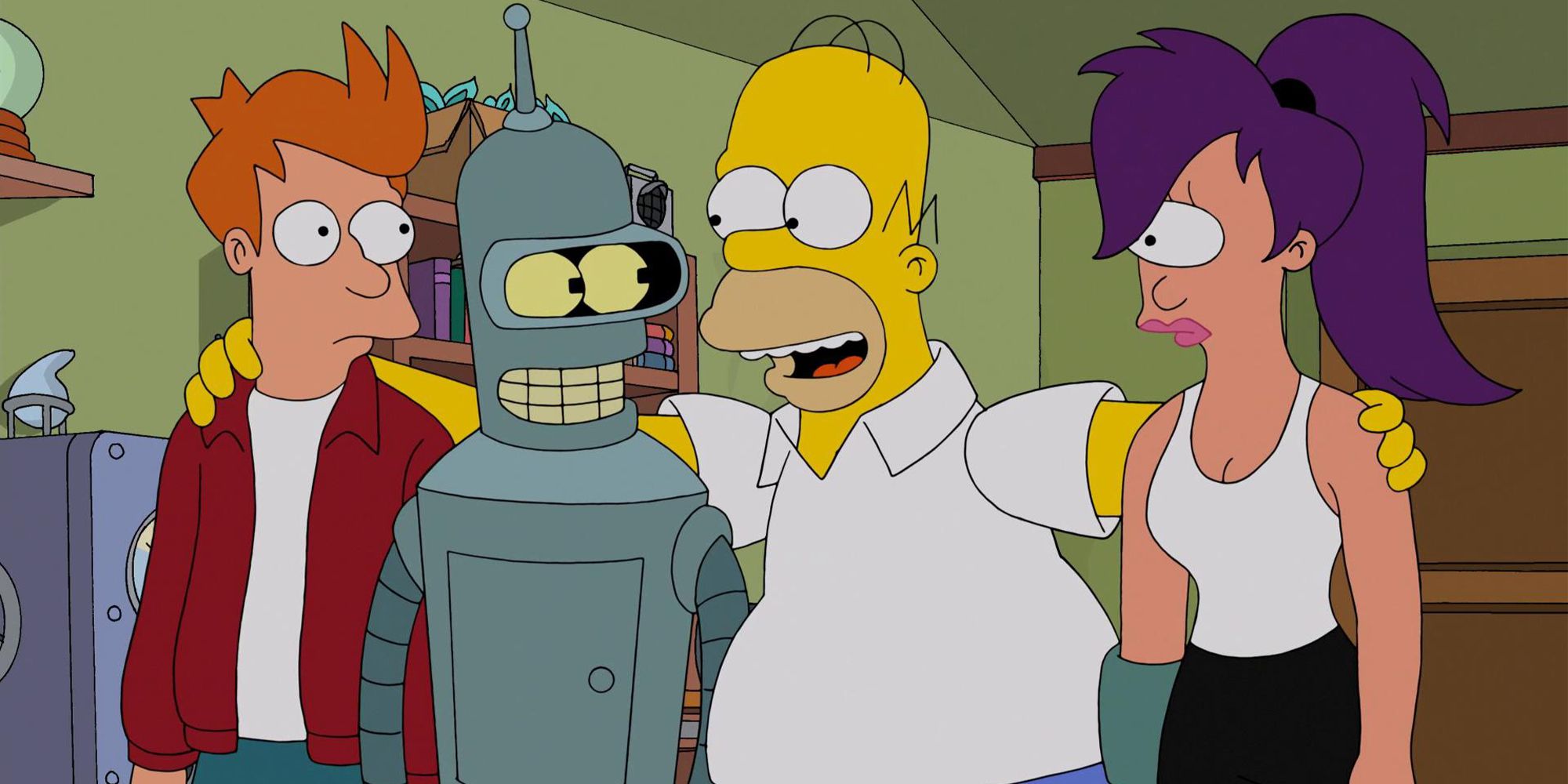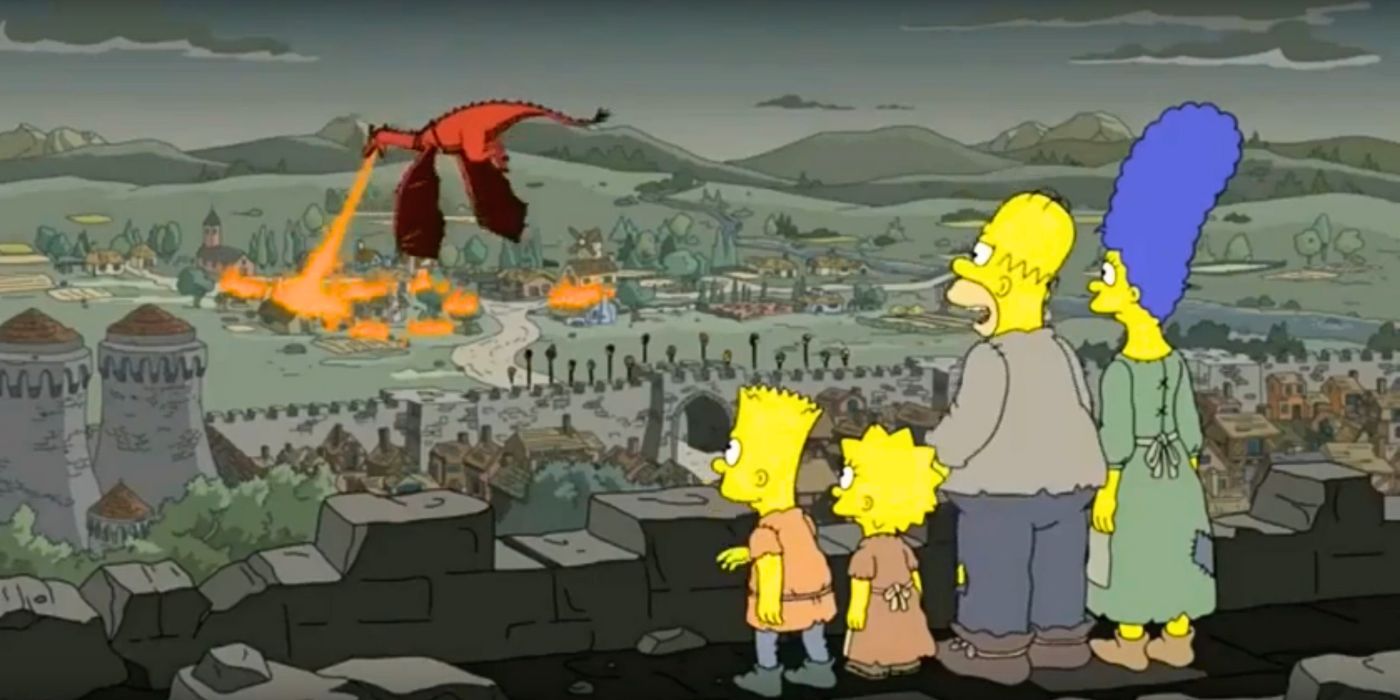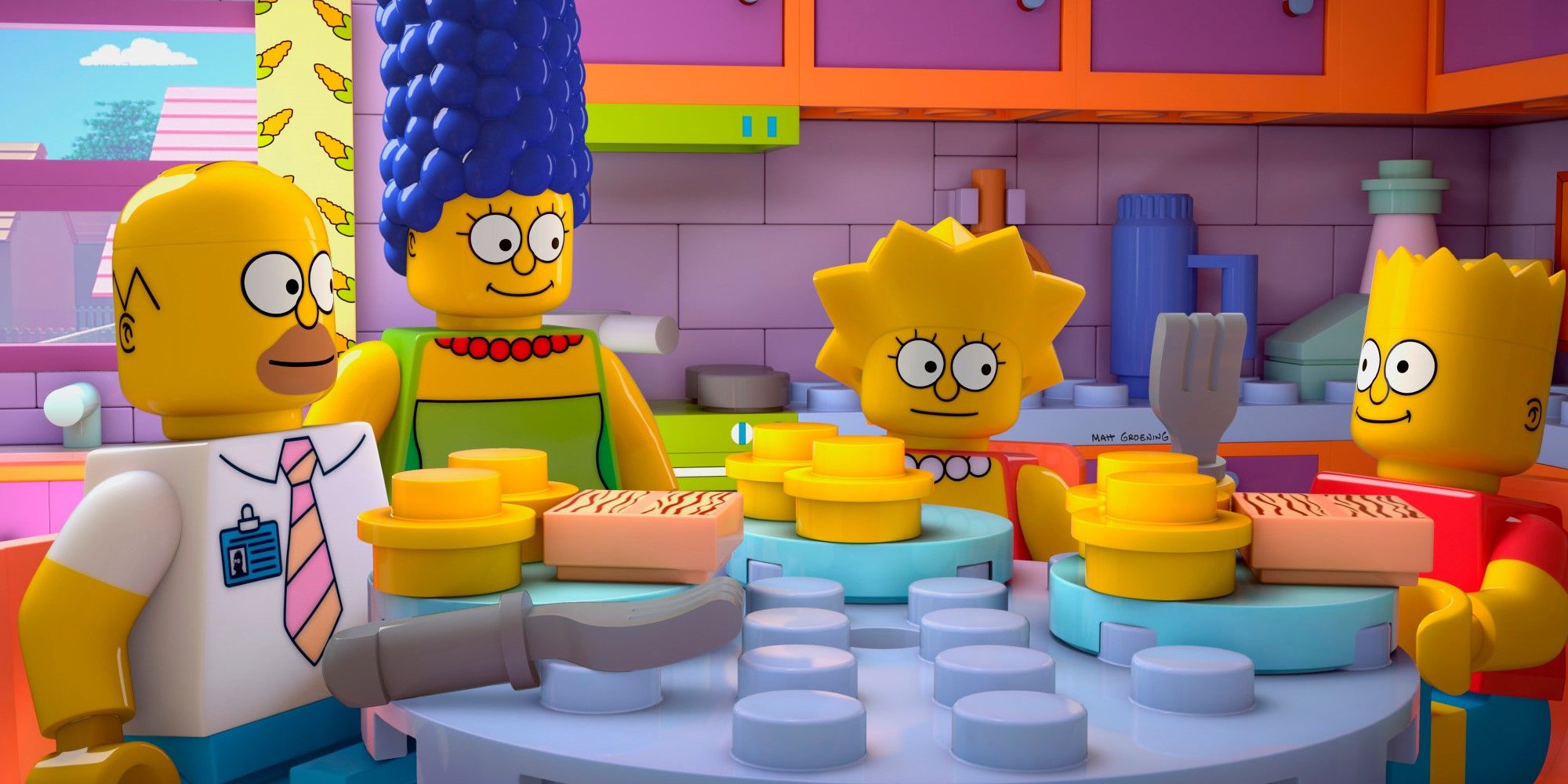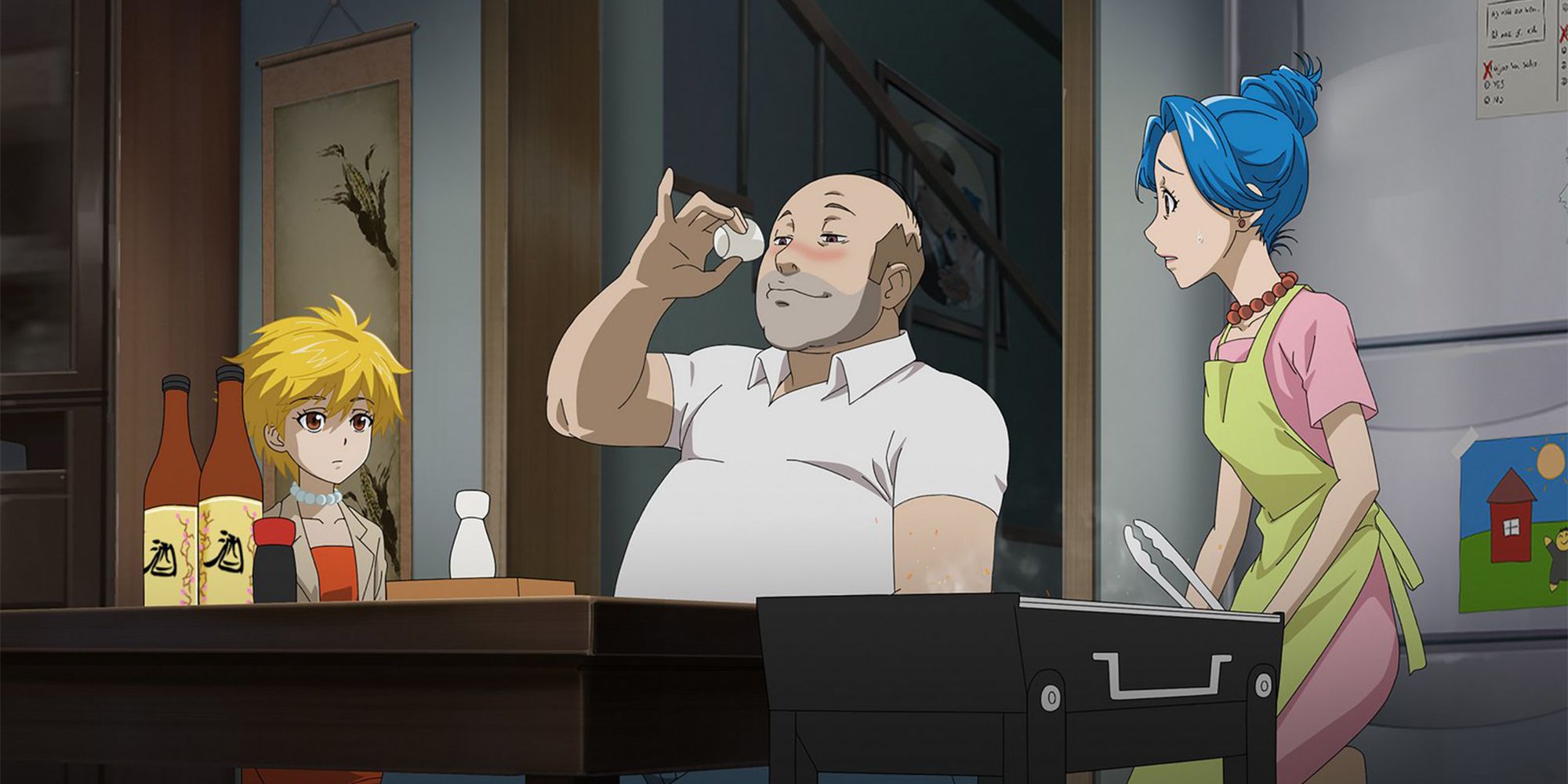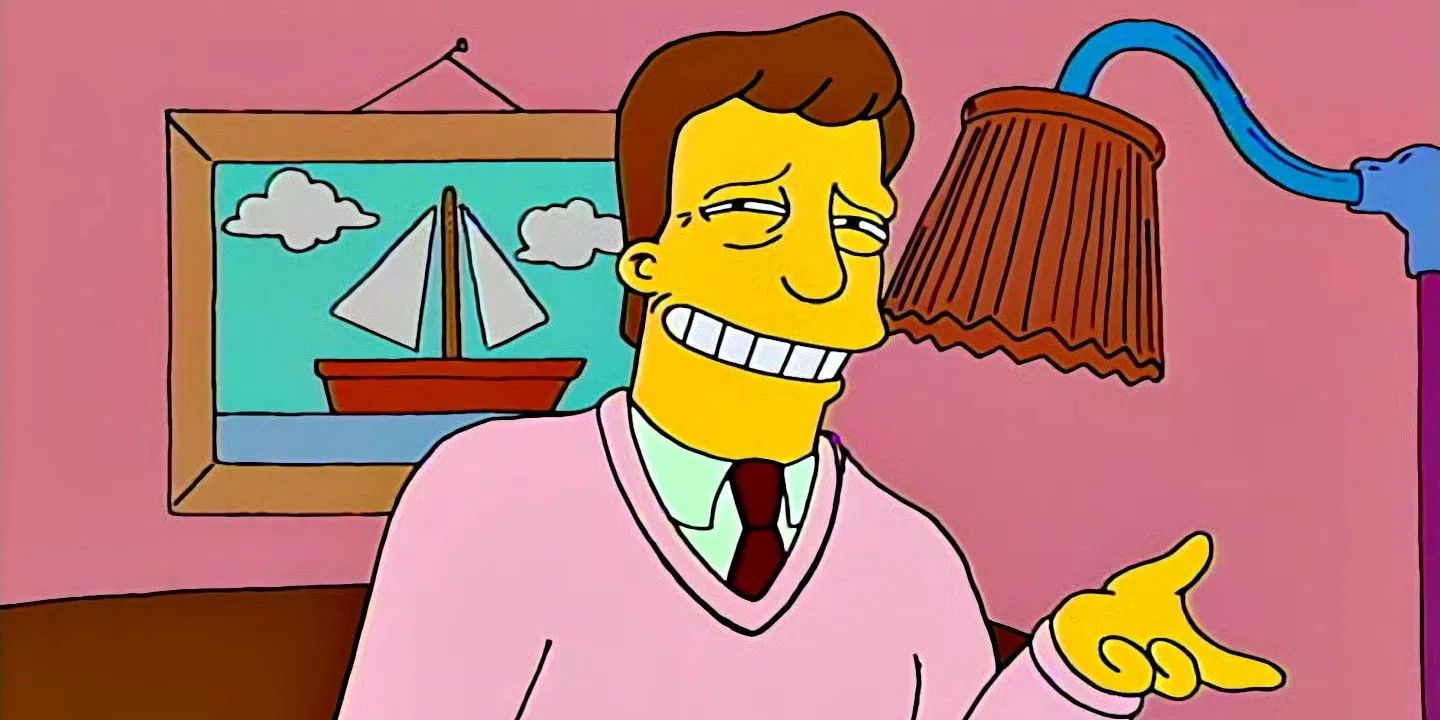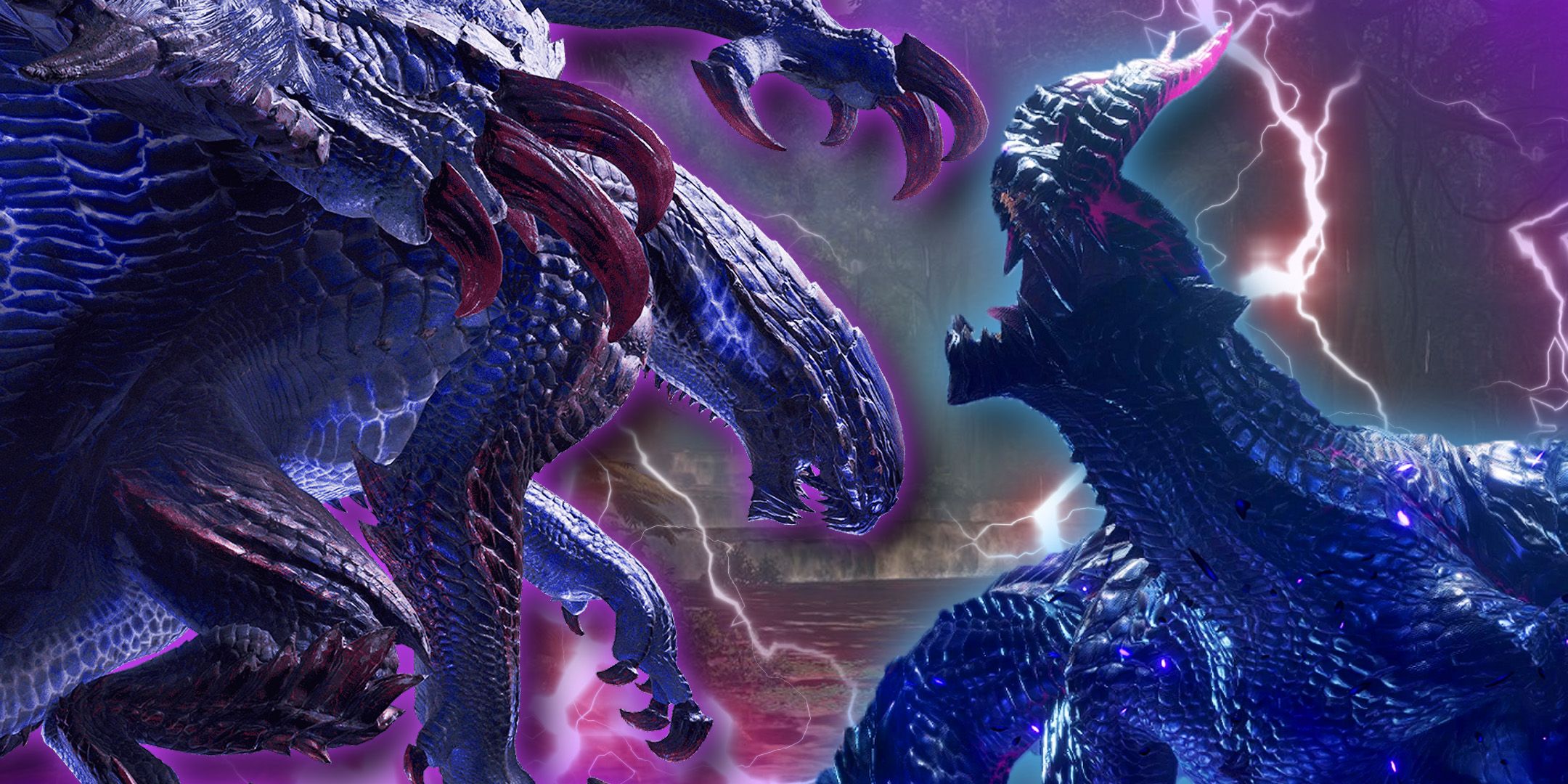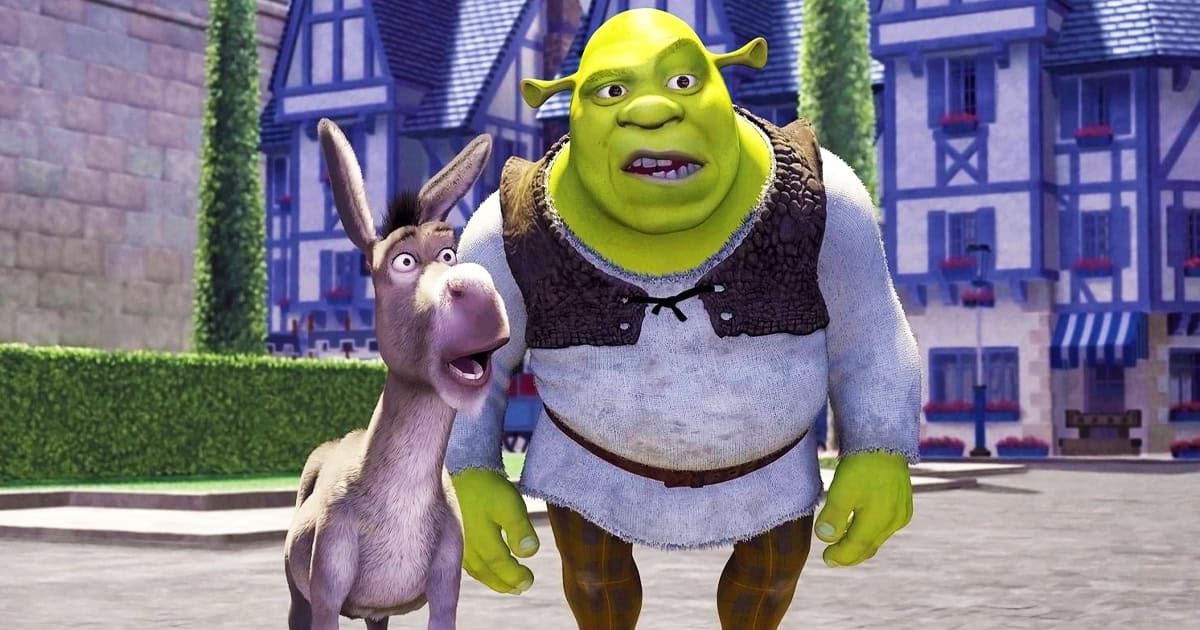Like many animated series, The Simpsons often embraces the bizarre and surreal, showcasing the limitless potential of storytelling. This unique quality allows the show to experiment with zany narratives that can make episodes truly memorable. For instance, in “Lisa’s Pony,” Homer hilariously dreams while driving, while in “Burns Verkaufen der Kraftwerk,” he finds himself in a whimsical chocolate wonderland during an important meeting with his bosses. These moments exemplify how the creative freedom of animation can lead to unexpected and delightful storytelling.
However, the show doesn’t solely rely on absurdity to surprise viewers; it also employs unconventional storytelling techniques. For example, “Who Shot Mr. Burns? (Part One)” concludes the season and episode with a suspenseful cliffhanger, while “Barthood” creatively explores timelines that transcend the typical Simpsons universe. “22 Short Films About Springfield” presents a series of vignettes, allowing for a diverse exploration of Springfield’s residents within a single episode. Additionally, “24 Minutes” takes inspiration from the real-time narrative style of the series 24. Each “Treehouse of Horror” episode further embraces the unusual by branching into three separate non-canonical tales. Identifying ten particularly quirky episodes from over 36 seasons can be a subjective challenge, but the following selections highlight how experimenting with tone, setting, and narrative style can yield fascinating results, showcasing that these Simpsons stories are distinct in their own right.
10
“The Springfield Files”
Season 8, Episode 10 (1997)
In a humorous and ominous introduction by Leonard Nimoy from the original Star Trek, the episode “The Springfield Files” presents a unique experience reminiscent of a “Treehouse of Horror” special. However, it diverges from that format, functioning as a clever parody of The X-Files, packed with enough references to various science fiction and horror media to leave viewers both entertained and bewildered. The bizarre happenings in Springfield include an elderly man transforming into a whimsical creature that could easily be plucked from a Dr. Seuss story, alongside a notorious illegal alien crossover that the show would likely avoid today.
As one of the standout episodes from Season 8, this installment features a chilling musical score that successfully establishes an eerie ambiance throughout the narrative. A playful nod to The Shining takes up considerable screen time, and Nimoy’s character’s abrupt exit mid-episode adds another layer of absurdity. What enhances the bizarre nature of this episode is that Nimoy actually appears within the very story he narrates. With an alien plot that dominates the entirety of “The Springfield Files,” its unique texture makes it consistently eccentric and extraordinarily entertaining.
9
“Treehouse of Horror VI”
Season 7, Episode 6 (1995)
The sixth installment of the “Simpsons Halloween Special” breaks tradition by omitting a formal introduction, instead opting for a brief image of a beheaded Krusty on horseback, which sets a peculiar tone. The first segment, “Attack of the 50 ft. Eye Sores,” features Homer, who unintentionally brings giant advertisements to life after taking a bite of a donut. The second segment, “Nightmare on Evergreen Terrace,” presents a chilling scenario where Groundskeeper Willie terrorizes Springfield’s children within their dreams.
While these segments provide a rich array of eerie and unusual settings, the third segment truly pushes the envelope. Titled “Homer³,” it showcases Homer as he accidentally ventures into a mysterious realm that propels him into a three-dimensional world. Although he can hear his family and vice versa, he finds himself trapped. The segment uniquely portrays the citizens of Springfield attempting to rescue him as he navigates further perils, making for an entertaining and wild viewing experience, especially as the climax unfolds.
8
“Moe Goes From Rags to Riches”
Season 23, Episode 12 (2012)
The episode “Moe Goes from Rags to Riches” opens with a series of clever parodies of popular television shows, setting an intriguing tone for this quirky episode. The townsfolk are particularly unkind to Moe, humorously suggesting that his best friend is his bar rag. This could lead viewers to anticipate a storyline about Moe forging a new friendship; however, the narrative takes an unexpected turn when a spotlight shines on his rag, bringing it to life. The rag then narrates its backstory, taking us back to medieval France.
As viewers watch, they may find themselves thinking, “What on Earth is happening?” This episode is filled with bizarre and fantastical elements, as the rag recounts its adventures through various historical settings, including medieval times, Persia, and Spain, featuring tales reminiscent of A Thousand and One Nights. The rag’s narrative reveals its woven origins from demon wool, its involvement in major historical events such as assisting Michelangelo in painting the Sistine Chapel, and much more. Despite the minor subplot, this episode is undeniably one of the most eccentric entries in the series.
7
“Holidays of Future Passed”
Season 23, Episode 9 (2011)
No list of “Weird Simpsons Episodes” would be complete without the inclusion of a narrative that traverses different time periods. One of the most inventive future-themed episodes, “Holidays of Future Passed,” begins with a Thanksgiving theme and spans decades of Christmas celebrations, culminating in a Christmas where Bart has two children and Lisa has a teenage daughter. The episode introduces fantastical elements, such as a holographic presentation of “The Itchy and Scratchy Show,” kids who can hear thoughts, and Maggie achieving fame as a singer.
In fact, the episode is packed with so many unique details about its futuristic world that it’s impossible to list them all. On another level, this entry is intriguing behind the scenes as it was initially planned to serve as The Simpsons‘ series finale because the creators were uncertain about the show’s future beyond the 23rd season. (As it turned out, they were completely wrong about that.) With this context, fans are invited to imagine a world where this surprisingly strong and consistently odd episode might have marked the end of this animated classic.
6
“The Man Who Came to Be Dinner”
Season 26, Episode 10 (2015)
The episode titled “The Man Who Came to be Dinner” kicks off with an unusual couch gag that features an art gallery, setting the stage for a plot that stands out due to its peculiarities. The amusing Star Wars crossover moments at Dizzneeworld are cleverly meta; however, the narrative quickly descends into even stranger territory when the Simpson family embarks on a ride that launches them into outer space.
As the family encounters Kang and Kodos on screen, Homer humorously remarks that it isn’t even Halloween, adding another layer of meta humor. A potato chip scene reminiscent of the Season 5 classic “Deep Space Homer” makes an appearance, alongside a bizarre twist where Homer grows an extra hand from Marge’s hair. Upon arrival at the aliens’ planet, the surrealism escalates to a level akin to an episode of Futurama. The episode maintains a non-stop flow of eccentricities throughout, making it surprisingly entertaining for viewers of Season 26.
5
“Simpsorama”
Season 26, Episode 6 (2014)
In “Simpsorama,” the narrative literally intertwines the worlds of Matt Groening‘s two iconic series, making it a unique crossover event. From the very beginning, the episode cleverly encapsulates its premise: “A Show Out of Ideas Teams Up With a Show Out of Episodes.” The intriguing dynamic takes a twist when Bender (voiced by John DiMaggio) unexpectedly appears in the Simpsons’ basement, leading to humorous exchanges between Lisa and Bart as they compare him to Homer. As the plot unfolds, more familiar characters from Futurama join the fray, enhancing the chaotic energy of the episode.
As the story progresses, it reveals a future filled with chaos, all triggered by Bart’s actions. While Maggie and Bender find themselves in present-day Springfield, the rest of the characters get transported to the future, creating a blend of humor and oddity that defines this crossover. Although it may not deliver the highest comedic moments, it stands out as one of the strangest and most entertaining entries from both series.
4
“The Serfsons”
Season 29, Episode 1 (2017)
Opening with a Game of Thrones-inspired couch gag, “The Serfsons” sets the tone for Season 29 with a fantastical theme. The bizarre imagery features Maggie sucking on a beak, Homer kissing a horse’s foot, and a nursing home loaded with people entangled in webs. Also, Marge’s mother makes an unexpected appearance as a significant character, having been bitten by an ice-walker, which propels Marge into a quest for her rescue.
This episode is rife with whimsical elements, including Bart’s recurring joke about Moe’s sentient goo, Mr. Burns sporting a pair of wings, and a talking missionary-lion. Additionally, Lisa’s ability to perform magic—an illegal act for serfs—results in her capture. Homer leads a band of outraged peasants (and underutilized trees) to rescue her from captivity, making numerous references to popular fantasy media. Overall, this episode stands out as one of the most unconventional entries in the series.
3
“Brick Like Me”
Season 25, Episode 20 (2014)
For the landmark 550th episode of The Simpsons, the creative team boldly embraced a LEGO aesthetic, transforming the show into a unique visual experience. The episode begins with Homer awakening from a co-branding dream, and the moment he opens his eyes, we are greeted by Marge in her LEGO form. This jarring visual immediately sets the tone for what is bound to be an unconventional episode, yet it quickly becomes apparent that a flashback will revert to the traditional animation style.
As the narrative unfolds, LEGO-Homer begins to encounter reflections of himself as the regular Homer, which establishes the central conflict: an existential crisis about living within a fantasy universe where he connects with his daughter on a deeper level. The episode draws intriguing parallels to The Lego Movie, a connection that is humorously acknowledged at the end. As Homer strives to escape his idyllic LEGO reality to return to the genuine world, “Brick Like Me” stands out as one of the most consistently peculiar episodes in the series.
2
“Treehouse of Horror XXXIII”
Season 34, Episode 6 (2022)
“Treehouse of Horror XXXIII” stands out even among its own series for its level of absurdity. This episode illustrates that even after 33 seasons, The Simpsons still manages to shock its audience. Rather than following the typical tradition of beginning in a graveyard, this segment opens with a hardcover book that reveals the first story: “The Pookadook,” a mediocre parody of The Babadook. The second segment takes an even weirder turn, presented in an anime style where Lisa kills a jailbird with a book she finds on the street, embarking on a spree of justice that includes numerous humorous deaths.
The final segment pushes the limits of strangeness even further. It begins with a clever twist on Season 4’s iconic “Monorail” episode. Suddenly, in the midst of a scene, two intoxicated fans interrupt to quote Homer’s line about a possum. An announcer soon declares that this episode is malfunctioning, leading to Homer’s shocking realization that he is not a man but rather a piece of intellectual property. This episode is arguably one of the most meta narratives in television history, concluding with a haunting shot of various settings identified by different famous animated shows, culminating in a brief yet surreal cameo by Kang and Kodos.
1
“The Simpsons’ 138th Episode Spectacular”
Season 7, Episode 10 (1995)
In a playful twist, the creators of The Simpsons decided to celebrate a random milestone with “The Simpsons’ 138th Episode Spectacular.” What should viewers expect from such a whimsically titled episode? The answer: an abundance of unexpected content. Unlike typical clip shows, this episode is filled with unseen footage, outtakes, and previously unbroadcast material, along with a glimpse into the origins of this beloved animated family.
Hosted by the charismatic Troy McClure, this wildly structured episode features fan letters and trivia questions that provide humorously inaccurate answers, such as the cost of Maggie in the show’s opening sequence. Additionally, deleted scenes from episodes like “Krusty Gets Kancelled,” “Mother Simpson,” and “Treehouse of Horror IV” are included. This unique episode, complete with the nudity in the credits while KC and the Sunshine Band‘s “Shake Your Booty” plays, truly takes the concept of “unconventional” to extraordinary heights, ensuring hardcore Simpsons fans find delight in this exceptional oddity.

[nospin]Here you can find the original article; the photos and images used in our article also come from this source. We are not their authors; they have been used solely for informational purposes with proper attribution to their original source.[/nospin]


